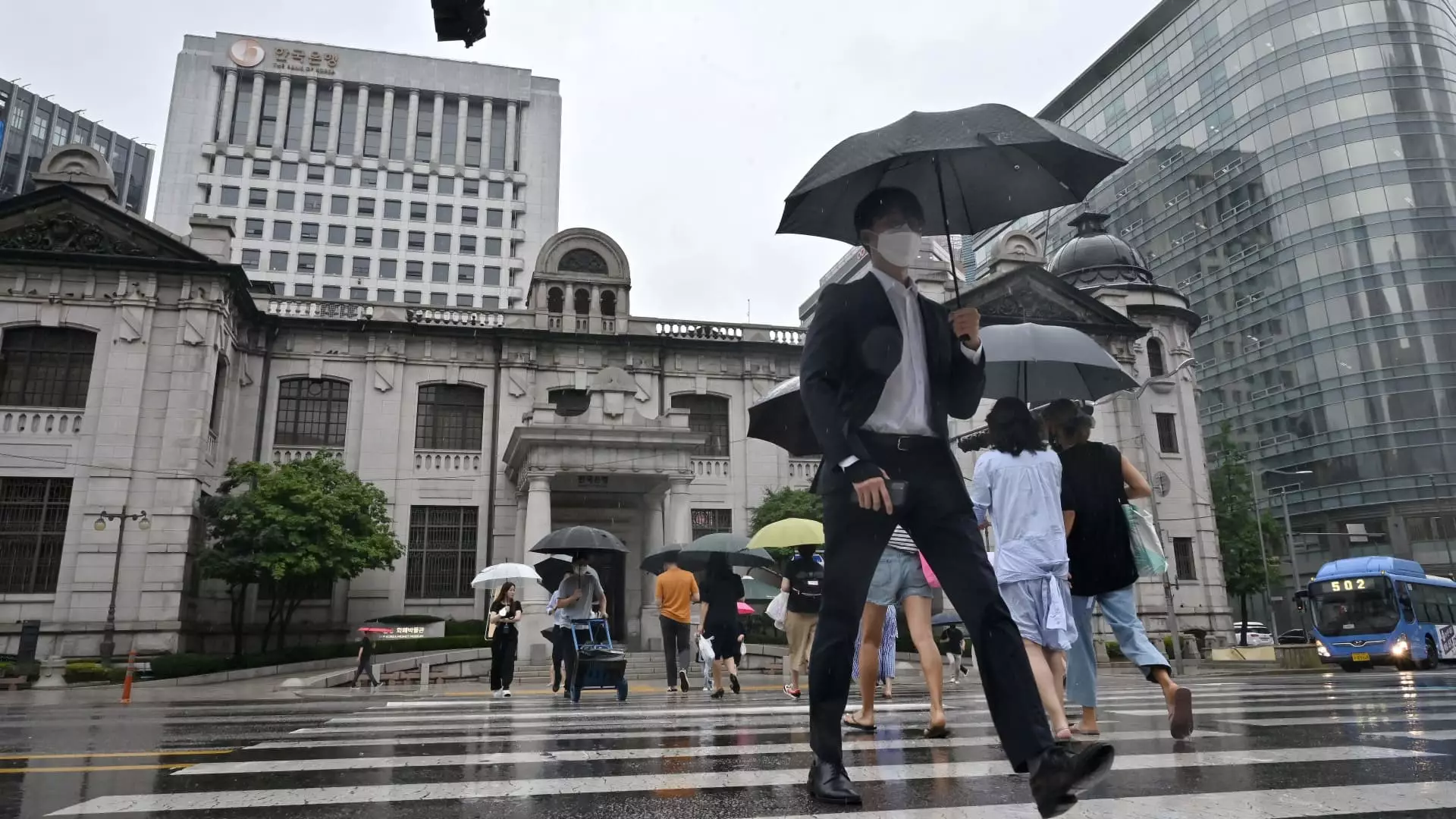In a notable move to adjust its economic strategy, South Korea’s Bank of Korea (BOK) has implemented a 25 basis point reduction in its benchmark interest rate, bringing it down to 3.25%. This decision marks the first interest rate cut since March 2022, coinciding with a tightening of monetary policies initiated by the Federal Reserve. Such a significant shift indicates a response to changing economic conditions, particularly the recent trajectory of inflation in the country.
The backdrop to the BOK’s decision can be traced to the inflation rate, which recently fell to its lowest point in over three years at 1.6% in September, significantly below the BOK’s target of 2%. This decline suggests that inflationary pressures, which had previously spiked in the face of global economic disruptions, are stabilizing. In its official statement, the BOK highlighted this stabilization and remarked on the easing risks associated with household debt growth and foreign exchange pressures. These observations are critical, as they lay the groundwork for reconsidering the previously restrictive monetary policy that had been in place since August 2021.
To fully appreciate the implications of this rate cut, one must consider the historical context. The BOK undertook an aggressive campaign of rate hikes, raising interest rates by a total of 300 basis points over 16 months, culminating in a peak rate of 3.5% in January 2023 when inflation was at 2.6%. This period of tightening monetary policy came as a reaction to a peak inflation rate of 6.3% in July 2022, the highest in two decades. Given this context, the recent cut reflects a significant pivot from prior economic measures aimed at curbing inflation.
Market analysts, such as Park Seok Gil from JPMorgan, speculate that this interest rate cut may signal the onset of a broader cycle of rate reductions. The BOK’s rationale appears to center less on directly responding to a downturn in domestic demand and more on readjusting its policy stance to align with improving macroeconomic conditions. Predictions suggest that a continued normalization of monetary policy—potentially reducing rates by an additional 75 basis points—could stimulate private consumption growth, a vital component of South Korea’s economy.
The opinion of market experts, including Morgan Stanley’s Kathleen Oh, reinforces the position that the current macroeconomic landscape is conducive to rate cuts. Oh noted that muted inflationary pressures coupled with stabilizing global oil prices create an environment where rate reductions are not only feasible but prudent. As housing demand wanes, which had previously constrained the BOK’s ability to consider cuts, further easing of monetary policy might soon follow.
South Korea’s recent interest rate cut represents an important recalibration of its monetary policy, responding to a more stable economic backdrop and evolving inflation rates. As the BOK navigates these changes, the potential for further rate reductions could catalyze growth in areas like consumer spending, indicating a strategic effort to foster economic resilience in a post-tightening landscape. The coming months will be crucial for understanding the full impact of this policy shift on South Korea’s economy.

Leave a Reply